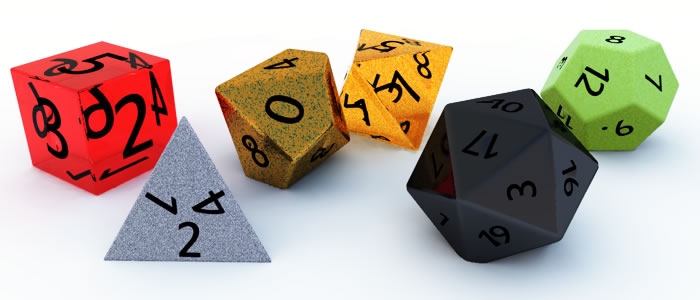The type of dice and dice methods should support or enhance the type of game you want to run or play. So what dice system best matches a Lovecraft weird horror genre?
I should correct myself from the start: this choice isn’t about dice systems as it is about dice behaviors. And by dice behaviors, I mean how players and game masters interact with the dice.
One element from Lovecraft stories I wanted to incorporate are risks and consequences of transformations. Transformations occur throughout many of Lovecraft’s works.
Narrator Robert Olmstead of the The Shadow Over Innsmouth becomes aware that the inhabitants of the town of Innsmouth are genetically intermixed with the Deep Ones and also makes a horrifying conclusion about his own genetic makeup. Another, but more voluntary transformation is the revelation that Richard Upton Pickman of Pickman’s Model transformed into a ghoul when later met in The Dreamquest of Unknown Kadath. Then there are the many descents into madness experienced by many of Lovecraft’s narrators and protagonists.
One way to build transform right into the system is to allow the actual dice to change. Some systems have incremental die types, such as a d4 becoming a d6, a d6 becoming a d8, and so on.
You don’t find a lot of transformational dice is very simple games; since this is a complex behavior then, and to keep the game from becoming so complex that players struggle to remember the rules, I decided to limit the game to using a single die type: the classic d6. That eliminates incremental die types.
First among the dice behaviors of the game is to make it a d6 based dice pool system. No other role playing dice needed but the dice you find in every home. Players though have some control over what color of dice to use.
Second among the dice behaviors is to give the player limited control over incrementing or decrementing roll values with meaningful results. A meaningful game mechanic for this is the application of a Skill. The more skilled you are, the more likely you can influence the result of a roll in your favor.
Third among the dice behaviors are to have circumstances transform the dice based on the state of mind of the character, and embed types of risk into colors of dice. A self aware kleptomaniac that walks into a department store filled with small, pocket-sized items increases the risk of an undesired action.
